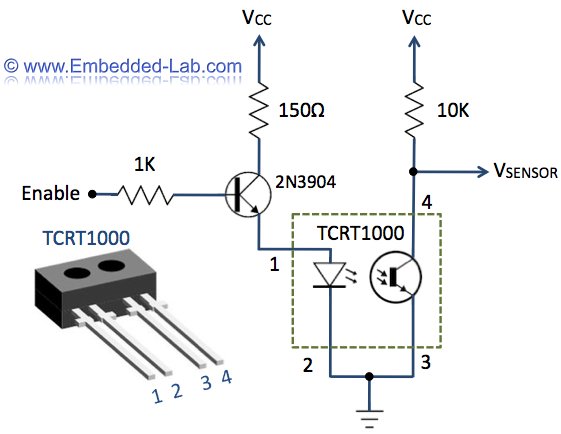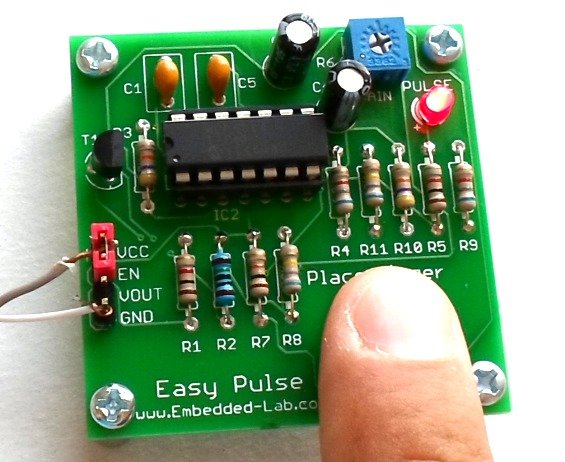Meet Easy Pulse: A kit that includes all it needs to make a DIY heart rate sensor. Although it is not built using an Arduino, it is still open and easy to build.
“This project is based on the principle of photoplethysmography (PPG) which is a non-invasive method of measuring the variation in blood volume in tissues using a light source and a detector. Since the change in blood volume is synchronous to the heart beat, this technique can be used to calculate the heart rate. Transmittance and reflectance are two basic types of photoplethysmography. For the transmittance PPG, a light source is emitted in to the tissue and a light detector is placed in the opposite side of the tissue to measure the resultant light. Because of the limited penetration depth of the light through organ tissue, the transmittance PPG is applicable to a restricted body part, such as the finger or the ear lobe. However, in the reflectance PPG, the light source and the light detector are both placed on the same side of a body part. The light is emitted into the tissue and the reflected light is measured by the detector. As the light doesn’t have to penetrate the body, the reflectance PPG can be applied to any parts of human body. In either case, the detected light reflected from or transmitted through the body part will fluctuate according to the pulsatile blood flow caused by the beating of the heart.”
 The output of the kit is an analog signal that can be interpreted to detect the heart beats. So, you can still use your Arduino and write some code for forwarding the heart beats to your computer, smartphone, Cloud!
The output of the kit is an analog signal that can be interpreted to detect the heart beats. So, you can still use your Arduino and write some code for forwarding the heart beats to your computer, smartphone, Cloud!
For more detail: A DIY photoplethysmographic sensor for measuring heart rate

